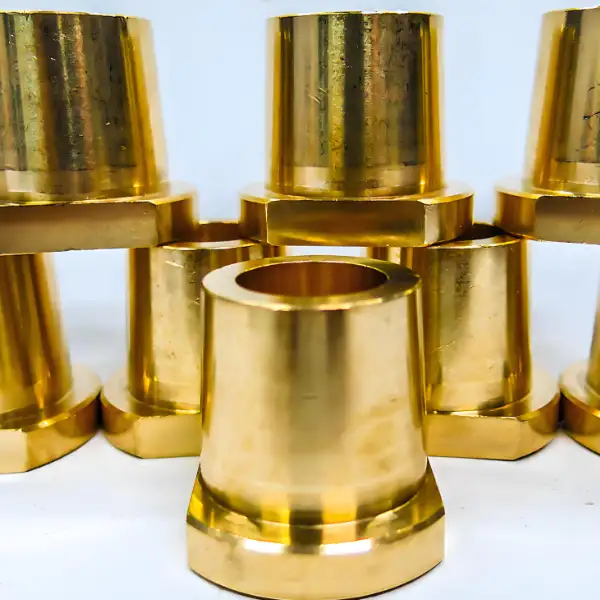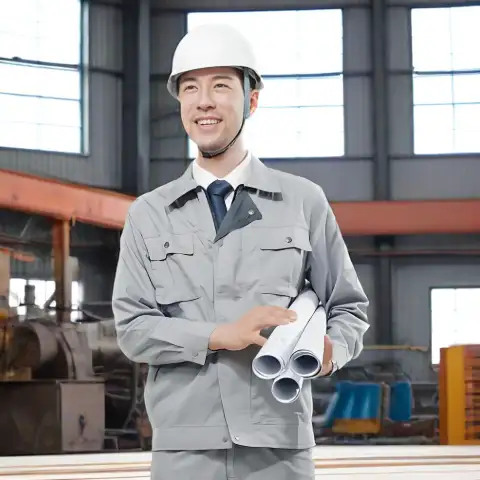Copper-nickel alloys (cupronickels) — notably the 90/10 (Cu-10Ni) and 70/30 (Cu-30Ni) families — are among the best choices for seawater service, condenser and heat-exchanger tubing, marine piping and antifouling sheathing because they combine excellent resistance to uniform and localized corrosion in seawater with good fabricability and reasonable mechanical strength; design success depends on selecting the right grade (composition + additions such as Fe/Mn), following the relevant ASTM/EN specifications, and applying correct commissioning and welding practices.
1. Quick technical summary and recommendations
Cupronickels are copper-based alloys with significant nickel additions (typically 10–30 wt% Ni). The 90/10 and 70/30 designations are shorthand for alloys with roughly 10% and 30% nickel respectively. The 70/30 grade (UNS C71500/CU-Ni-30) gives higher strength and somewhat improved resistance at higher velocities; the 90/10 grade (UNS C70600/Cu-Ni-10) offers excellent cavitation/impingement resistance and is often preferred for condenser tubing and condenser plates. For seawater piping and heat-exchanger service, choose the grade whose published exposure history, mechanical capacity and fabrication allowance match the project’s operating velocities, temperatures and chemistry. For aggressive or high-velocity seawater, consider “modified 70/30” (with small Fe and Mn additions) which has demonstrated better long-term resistance.
2. What is copper-nickel? composition and metallurgy
Copper-nickel alloys (commonly called cupronickel) are solid-solution alloys in which nickel is the primary alloying element in copper. Typical commercial compositions:
- Cu-10Ni (90/10 cupronickel): ~88–90% Cu, 9–11% Ni, small Fe/Mn/Pb allowances (UNS C70600 family).
- Cu-30Ni (70/30 cupronickel): ~70% Cu, 29–33% Ni plus minor Fe & Mn (UNS C71500 family).
Small intentional additions of iron (Fe) and manganese (Mn) — e.g., ~1–2% each in modified 70/30 — improve resistance to impingement attack and increase strength without sacrificing corrosion resistance. The microstructure is a single-phase face-centred cubic (FCC) solid solution at ambient temperatures, which underpins good ductility and workability.
3. Common commercial grades, UNS numbers and standards
Key commercial identifiers and standards engineers will encounter:
- UNS C70600 — CuNi 90/10; common for condensers, heat exchangers and bilge/brine systems.
- UNS C71500 — CuNi 70/30; common for sea water piping, ship sheathing, and valves.
- Modified 70/30 — sometimes specified as CuNi30Mn1Fe (EN designation CW354H) where Fe & Mn additions improve erosion/corrosion resistance.
Relevant ASTM/ASME and EN standards (examples; always quote the latest edition number in specifications):
- ASTM/ASME B111 (seamless Cu-Ni tubes), B466 (welded Cu-Ni pipe), B151 (wrought copper and copper alloys: rod, bar, etc.). National standards organizations and supplier datasheets will list the appropriate product standards for tubes, plates, castings and forgings.

4. Physical, mechanical and thermal properties
Below are representative properties — always use supplier datasheets or material test certificates for final design values.
- Density: ≈ 8.9–8.95 g/cm³ (slightly lighter than most steels).
- Electrical conductivity: lower than pure copper; 90/10 has higher conductivity than 70/30.
- Thermal conductivity: moderate; suitable for heat-exchanger applications though less conductive than pure copper.
- Yield strength (annealed): depends on temper — coarse ranges: 90/10 annealed ≈ 70–150 MPa, 70/30 annealed ≈ 120–250 MPa; cold work raises yield and tensile strengths.
- Elongation: typically good (20–40% in annealed conditions).
- Melting range: no sharp melting point; solidus ≈ 1170–1190 °C, liquidus ≈ 1220–1240 °C depending on composition.
(These are illustrative — consult authenticated datasheets for qualification and welding parameters).
5. Corrosion behaviour: seawater, biofouling and localized attack
Cu-Ni alloys outperform many common alloys in natural seawater for long-term uniform corrosion resistance and have natural antifouling tendencies (due to trace Cu release) that reduce marine growth. Important practical points:
- Initial elevated corrosion rates are common during the first weeks/months of exposure and normally decline to low steady rates as protective films form; this “run-in” behaviour is well documented in field trials. Long-term steady-state corrosion rates can be very low (<0.05 mpy in many calm seawater conditions).
- Velocity effects: at high flow velocities or where impingement occurs (jets, sharp elbows, high turbulence), erosion-corrosion can raise attack rates. The modified 70/30 alloys (with Fe & Mn) have superior resistance to impingement attack compared with plain 70/30. Engineers should limit local velocities, add sacrificial design features, or select higher-resistance materials for high-velocity sections.
- Pitting and crevice corrosion: cupronickels are generally resistant in typical seawater, but stagnant pockets with low oxygen or high chloride concentration can raise risk. Proper flow design and access for inspection mitigate this.
- Biofouling: copper ion release provides some natural biofouling control, lowering maintenance for heat-exchanger surfaces relative to many steels and titanium in some circumstances. However, antifouling performance depends on alloy, film formation, and local ecology.
6. Fabrication, welding and heat treatment
Cupronickels are highly workable. Practical recommendations:
- Cold work and anneal: both 90/10 and 70/30 respond to cold-working; intermediate anneals restore ductility. Follow producer temper tables.
- Welding: gas and arc welding methods (GTAW, SMAW, GMAW) are commonly used. Use matching or approved filler metals and control heat input to avoid hot cracking. Preheat is typically unnecessary for thin sections; post-weld anneal is not normally required but stress relief measures depend on component geometry. Use qualified procedure and welders certified for the specific UNS grade.
- Brazing and soldering: available for thin parts and repair work using approved fluxes; avoid flux residues in seawater service.
- Machining: reasonably machinable; tool geometry and cutting speeds should be adjusted for non-ferrous metal behavior.
Always follow the manufacturer’s welding procedure specification (WPS) and the product standard’s fabrication notes.
7. Typical applications and selection rationale
Cu-Ni alloys are chosen where a unique combination of corrosion resistance in chloride environments, thermal conductivity and fabricability is required:
- Marine piping (sea water systems on ships and offshore platforms).
- Heat exchanger and condenser tubing in power plants and seawater-cooled equipment (90/10 widely used for condenser plates and tubes).
- Desalination plants and cooling-water systems: reduced biofouling and long service life lowers life cycle costs.
- Pump and valve components, offshore sheathing and shaftsleeves — where localized wear resistance and corrosion resistance are required.
Why choose cupronickel instead of stainless steel or titanium? Life-cycle cost and service history are decisive: cupronickel offers proven long-term performance in moderate velocity seawater at a typically lower material cost than high-alloy stainless steels or titanium, especially when fouling and maintenance costs are included. Design trade-offs must consider velocity, chloride content and temperature.
8. Design, inspection and service-life factors
Key design considerations:
- Velocity limits: keep internal seawater velocities below thresholds given in guidelines (project-specific; see Nickel Institute guidance) to avoid impingement. Where high velocity cannot be avoided, either increase wall thickness, add sacrificial wear pads, or change alloy.
- Start-up procedures: proper commissioning (slow ramping, controlled chlorination if used, removal of debris) reduces initial corrosion spikes. The formation of a stable protective film often reduces corrosion rates over months.
- Cathodic coupling: cupronickel performs acceptably when coupled to many metals, but check dissimilar-metal coupling and stray current paths.
- Inspection: plan non-destructive exams on high-risk locations (elbows, welds, velocity reducers) and monitor corrosion rates and biofouling. Use coupon or probe monitoring in long runs for rate confirmation.
9. Comparison table: 90/10 vs 70/30 vs modified 70/30
| Feature | Cu-90/10 (UNS C70600) | Cu-70/30 (UNS C71500) | Modified 70/30 (CuNi30Mn1Fe) |
|---|---|---|---|
| Approx. Ni (wt%) | ~10 | ~30 | ~29–33 |
| Typical use | Condenser tubing, condenser plates, heat exchanger tubes | Seawater pipe, sheathing, valves | High-velocity seawater piping, elbows, fittings |
| Strength (annealed) | Moderate | Higher than 90/10 | Similar to 70/30 (slightly higher) |
| Impingement/erosion resistance | Good | Better than 90/10 at moderate velocities | Best of the three for impingement |
| Biofouling control | Good | Good | Good |
| Weldability | Excellent | Excellent | Excellent (follow WPS) |
| Standard examples | ASTM B111, B151 | ASTM B111, B171, B466 | EN CW354H; common in maritime specs |
(Table is a summary — always confirm with supplier technical datasheets and project standards.)
10. Procurement, specification checklist and quality control
When specifying or procuring cupronickel components include:
- UNS number and alloy designation (e.g., C70600 or C71500).
- Product form and relevant ASTM/EN standard (tube, plate, pipe, casting).
- Required temper or mechanical properties (tensile, yield, elongation).
- Welding procedure specification references, filler metal type and qualification records.
- Inspection and testing: PMI / OES chemical verification, mechanical test certificates, hydrotest pressure, NDT on welds, visual inspection, dimensional checks.
- Surface finish and passivation requirements (if any).
- Delivery paperwork: mill test report (MTR) traceable to heat/batch number.
A well-scoped purchase order reduces substitutions and ambiguity at production.
11. Environmental, recycling and end-of-life
Cupronickels have excellent recyclability; the copper and nickel are both valuable and are commonly recovered at end-of-life. When specifying, plan for the alloy code to allow efficient sorting and recycling. In service, trace copper release to the environment is generally low but project environmental regulations for copper discharges must be considered for some facilities.
12. FAQs
Q1. Which cupronickel should I pick for seawater mains on an offshore platform?
A: For seawater mains where velocities are moderate, modified 70/30 (Fe & Mn additions) is a common industry choice due to improved resistance to impingement attack. For low-velocity service, either 70/30 or 90/10 may be appropriate depending on pressure and mechanical requirements. Always consult site velocity profiles and the Nickel Institute guidelines.
Q2. How fast can seawater flow through cupronickel pipe before erosion becomes serious?
A: There is no single universal cutoff — allowable velocities depend on pipe geometry, presence of suspended solids and turbulence. Designers use conservative velocity limits plus wear/inspection allowances; consult the Nickel Institute guidance for recommended velocity ranges and consider thicker wall or erosion-resistant details where necessary.
Q3. Are cupronickels susceptible to crevice corrosion or pitting?
A: In normal flowing seawater they show excellent resistance; stagnant crevices or deposits with low oxygen may raise localized risk, so avoid dead legs and provide adequate flushing and inspection.
Q4. Can I weld cupronickel to stainless steel?
A: Dissimilar-metal joints are possible but require qualified procedures and suitable filler metals or transition pieces. Verify for galvanic effects and mechanical compatibility.
Q5. What makes modified 70/30 different from standard 70/30?
A: Small additions of Fe and Mn strengthen the protective film and improve resistance to impingement and erosion, based on field experience and trials.
Q6. How does cupronickel compare with titanium for condensers?
A: Titanium has excellent corrosion resistance and often lower long-term fouling in some environments but is significantly more costly. Cupronickel frequently provides lower lifecycle cost for many coastal power and process plants due to its balance of material cost, thermal performance and fouling control. Compare using life-cycle cost models for your site.
Q7.Are there health or environmental restrictions for using cupronickel?
A: Normal engineered use has been widespread; however, site discharge regulations and local environmental rules regarding copper concentrations should be checked and complied with.
Q8.Where do I find verified material property data for design?
A: Use manufacturer datasheets, certified material test reports (MTRs), MatWeb or recognized standards (ASTM/EN). For corrosion guidance, consult the Nickel Institute technical guidelines and marine industry references.

